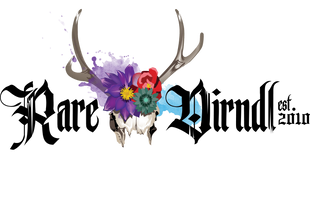True Facts about Lederhosen
- Lederhosen literally translates to Leather Pants in German
- Using fur or animal hide for pants goes way way way back to Otzi the Iceman, the 5,300-year-old frozen mummy who was found near the Alpine Austro-Italian border in 1991.
- But lederhosen as we know it today first took shape in the 1700s.
- These leather pants are said to have emerged in the Alpine regions of Germany and Austria, as the trousers of the working peasant community

- However, leather trousers were actually worn in many regions of Europe by riders and hunters
- The unique style of these leather trousers with a front drop "flap" however has its roots in the south of Germany or "Bavaria"
- Lederhosen fell out of fashion for a time in the 1800s as pants made from cotton or cloth began to gain popularity
- But when King Ludwig II (who was Bavarian) professed he was a fan of the style… that was that.
- Farmers and aristocrats alike started wearing lederhosen.
- While the peasants wore lederhosen made of goat or sheepskin that was dyed black, the nobles often chose to make their Lederhosen of deerskins
- These were then richly decorated to symbolize their nobility.

- Longer styled lederhosen are known at "Kniebundhosen" – or bundhosen for short
- The embroidery on the lederhosen often signified a certain region or town and people began to attribute a regional pride in wearing their leather pants.
- In many small villages men would have multiple pair or lederhosen some for everyday work and some for very festive occasions such as a wedding.
- In the 2009 Movie, Bruno, Sacha Baron Cohen wears a unique and rather unflattering style of lederhosen. I do not recommend this look

- One can expect to pay about $250 for a basic pair made of durable goat leather
- However, more expensive Lederhosen are also still available in deerskin and come with intricately designed embroidery and can cost up to $1,000!

- During the rise of blue jeans across our planet (ironically invented by a Bavarian named Levi Strauss) the Lederhosen lost their popularity in everyday life.
- However Lederhosen are making a comeback! In smaller, more traditional towns in southern Germany you can see people wearing lederhosen on a regular basis and you can see many people wearing lederhosen to places like Oktoberfest.

- Rare Dirndl does not make Lederhosen
- Today there are even women’s lederhosen that have feminine embroidery and a fashionable fit!
- Now go get your own pair of Lederhosen and see how wonderful they are! Wear it to a German restaurant, Oktoberfest, Oma’s house… wherever!
Sources:
http://www.destination-munich.com/traditional-german-lederhosen.html http://www.bavarianspecialty.com/pages/History.html http://blog.young-germany.de/2015/07/understanding-lederhosen-and-dirndl-culture/
_

